



 |
||||||
 |
||||||
 |
 |
|||||
| There is a
fabulous new art on the horizon. It has been created from the
marriage between surrealism and pop. An art that defines it’s own
new Genre, but has not yet received a single unified name.
The other day while sitting here at my desk, I began to try and categorize my art. Surely it must fit somewhere? It’s not quite Pop. It lacks some of the known popular familiarities that go along with the pop art style. It’s not quite surrealism. It replaces any sort of semi realistic styling with cartoon antics. Yet it combines the dream like qualities and animated style seen in the surrealistic and pop arts. Could this be new genre of art? Are there others who have a similar style to mine and therefore, similar categorizing problems? I must answer these questions so that my art might be recognized for what it truly is. To be categorized is to be united; no revolution artistic or otherwise has ever been created by just one person. As I began to research the subject, I came
across the other creators of this new art. Unfortunately, their
unique style has become obscured by, dissimilar genre names. You
might find this new art being called: Pop surrealism, lowbrow,
no brow, cartoonism, massurrealism, or acid pop. However, they
are all stylistically the same. With every new genre there comes
a mass scramble to be the one to lay claim to its new name and
definable terms. The race has started, so lets introduce some of
our contestants. |
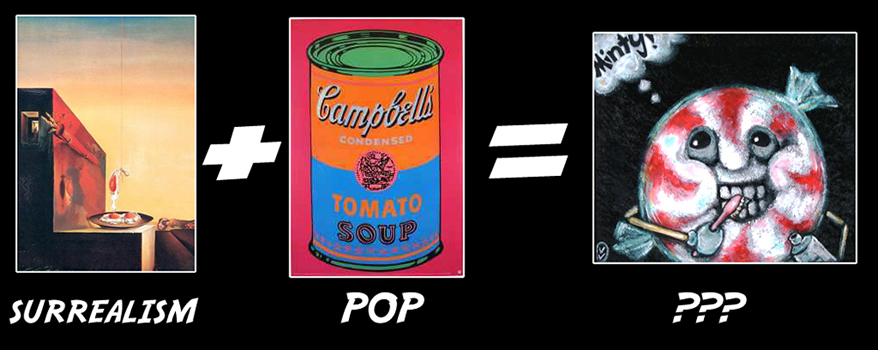 |
| Massurrealism: the art genre rooted in the combination of mass media related art and surrealist imagery. "A Term coined by artist James Seehafer in 1992, with a later book release date of August 1 2004 entitled: Massurrealism: A Dossier containing past essays from the 1990's to the present day by several artists who examine aspects of this contemporary genre." -(Amazon.com) |
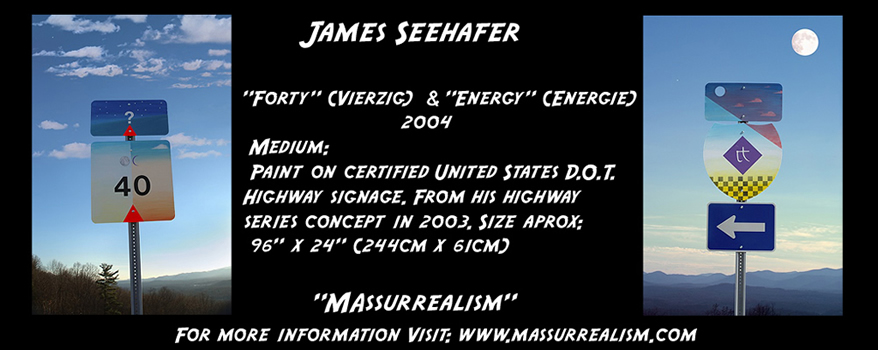 |
| Acid Pop: "paintings of imagined consumer products combines Dadaism [the first form of surrealism] and early Warhol style." -(Grant Wiggins) |
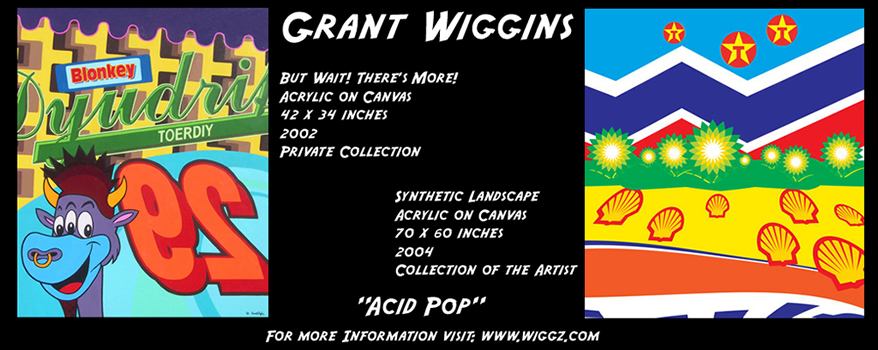 |
|
Pop surrealism/Lowbrow art: claims its origins in 1960's hot rod culture, underground comics, and rock music. “Lowbrow-the-Movement has been assigned a "circa" of 1994, as that is the year that Lowbrow artist extraordinaire Robert Williams founded Juxtapoz magazine. Williams claims copyright on the word "Lowbrow". As both pioneer and current grandee of the movement, he is certainly entitled"-(Shelley Esaak). Along with termed "lowbrow" art magazine Juxtapoz, there has also been a couple of books released. The first book, October 1, 2004 entitled Pop Surrealism. "This is the first book to offer a comprehensive survey of this movement featuring 23 of today's most important and interesting artists." -(Amazon.com) The second "weirdo deluxe" by Matt Dukes Jordan with a book release date of April 1, 2005. "Weirdo Deluxe is the first significant manifesto of the genre-a riotous blend of pop culture, street culture, pop art, and surrealism-and includes profiles of and interviews with 23 leading artists and hundreds of outrageous examples of their work. Special features include an expansive timeline, and peeks at the artists' collections and influences. Weirdo Deluxe is at once a primer and lowbrow art sourcebook as well as a visual homage to pop culture." -(amazon.com) ("Lowbrow art is slowly gaining momentum and doesn't necessarily care if The Art World recognizes it. What matters to Lowbrow is that most of us average people do recognize it" Lowbrow art may also be known as, underground, visionary, Neo-Pop, anti-establishment and "Kustom".) -(Shelley Esaak) |
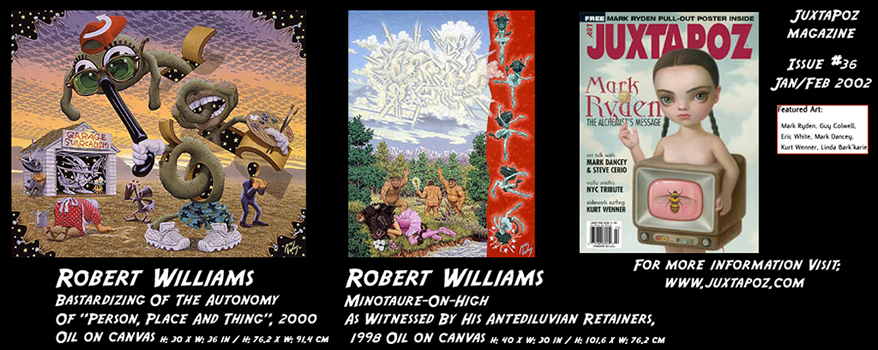 |
|
Nobrow Art: the space between the familiar categories of high and low culture " phrase coined by John Seabrook and one has also seen the term "Newbrow" (Shelley Esaak) with a book release date of February 15, 2000 entitled NoBrow : The Culture of Marketing - the Marketing of Culture "For more than a century, the elite in the United States distinguished themselves from consumers of commercial culture. Highbrow-lowbrow was the pivot on which distinctions of taste became distinctions of caste. The words "highbrow" and "lowbrow" are American inventions, devised for a specifically American purpose: to render culture into class. H. L. Mencken popularized the brow system in "The American Language," and the critic and scholar Van Wyck Brooks was among the first to apply the terms to cultural attitudes and practices. In "America's Coming-of-Age," he wrote, "Human nature itself in America exists on two irreconcilable planes, the plane of stark intellectuality and the plane of stark business." These are the planes that Brooks labeled highbrow and lowbrow. The difference between elite culture and commercial culture was supposed to be a quality distinction. One could confidently say that Mozart's Requiem was better than Nirvana's "Lithium," or that a handmade suit was better than an off-the-rack suit. But these aesthetic distinctions easily lent themselves to distinctions of social status, too. As long as commercial culture was assumed to be inferior to elite culture--TV was considered a dumbed-down form of theatre; Elvis-on-velvet paintings a bastardized form of art; mass-produced furniture inferior in quality to handmade furniture--the people who patronized commercial culture ("the masses," or, more recently, Joe Six- Pack, that reliable lower-middle-class redneck against whom all others, both the rich and the virtuous poor, can distinguish themselves) could be conveniently placed lower in the social hierarchy than the people who patronized elite culture. In Nobrow, however, commercial culture is a source of status and currency rather than the thing that the elite define themselves against. In Nobrow, the challenge that elite institutions such as the major museums face is how to bring commercial culture into the fold--how to keep their repertoire vibrant and solvent and relevant without undermining their moral authority, which used to be based, in part, on keeping the commercial culture out" -(John Seabrook 2003) |
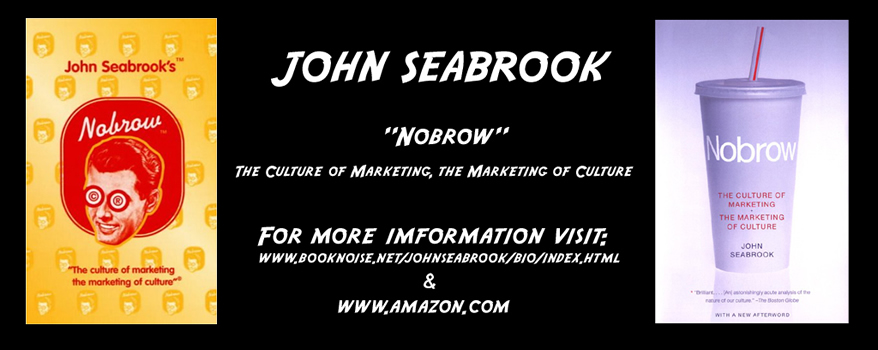 |
| Having taken all of this into consideration,
I give you my submission to the contest. Antics Art: A simple term
that is un-insulting to the art form, which it represents. It is
also original in verbiage. It’s meaning is as simple as its
dictionary description,
an·tic(s) (n. A ludicrous or extravagant act or gesture; a caper) adj. Ludicrously odd; fantastic.) When you hear the word Antics, perhaps it might bring to mind the actions of a cartoon character. This association goes well with the nature of this new style. A cartoon character's actions are typically comprised of both the bold and the outlandish. Likewise are the images of this new art style. I think the cartoon media associations and straightforward dictionary definition make an excellent match. An art that boasts a sort of dream like cartoon extravaganza, birthed from surrealism and fathered by pop. Having said that I feel that the true origin of this art is a mass conglomeration of the surreal, the pop and the mass media both vintage and current. To try to pin point an exact artist or event that started the cycle toward this new art would be near impossible, This is much bigger then that. From the earliest of the arts to now, art has been changing form and evolving. This is the next step in the logical art progression. The most important artistes of this movement are the ones who will use this term to refer to there work and unite under its definition. (* This term will remain un-copyrighted, as a free use term.) |
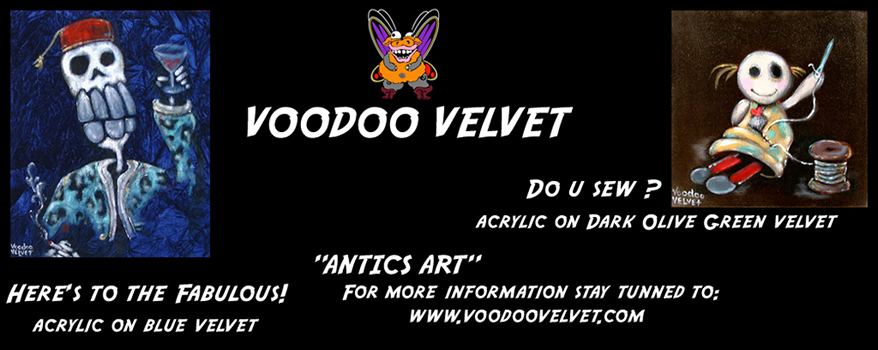 |
|
The winner of the contest remains to be seen. The most likely outcome is that the art community and the appreciators of art will pick the name of the new genre for us. More then ever, newly created works are about the viewer and less about those artists that create them. The original purpose of classical works of art was to depict and praise gods and kings. Through out history, art has been moving away from this purpose and transforming into an entertainment. What once was created to praise god and uplift mankind is now created to amuse and entertain. This new art is a spectacular example of an art created to aesthetically entertain the viewers rather then unyielding art created to depict an icon. As far as the name game goes, I must say that the "lowbrow" art movement certainly seems to have promoted themselves the most. However, I believe their folly is that not many artists want to refer to themselves as being "lowbrow". The traditional definition of this word is (n. One having uncultivated tastes. adj. also low·browed (-broud) Uncultivated; vulgar.) It is hard enough to get people to accept the idea of a new art. It may be impossible in this time period to undo a century old stigma that defines the term "lowbrow" as being that of low class. It is my opinion that both artist and art buyer want to feel fabulous when they are speaking of and referring to art. This being the most fabulous of art, to speak any less of it does it a great injustice. My only worry is that this will evolve into a situation where there will be so many different names, all for the same style creations, that our unique genre will never be realized. With people coming to refer to our style of art with only generalizations, "You know that cartoony stuff!" However, when the smoke clears unity is what will get the worlds attention. How will you define your art? |
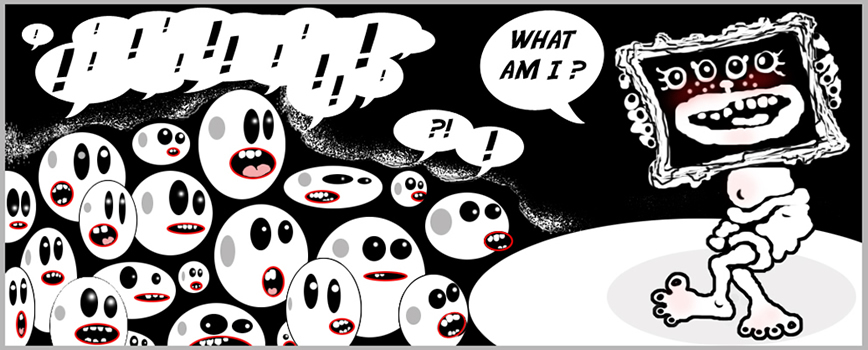 |
 |
 |
 |
|
 |
|||
|
As time has passed, the public knowledge of my
genera of art has increased. During this time, it has mainly borne
two different names, lowbrow and pop-surrealism. I have never
approved of the inherent negativity that the name lowbrow conveys.
However, as culture and time move forward it has become apparent
that Lowbrow is probably the name that has been chosen. As a
movement, it is said that Rat Fink is the first of the lowbrow art
style. I feel that it goes back further to carny art. It could
also be argued that carny art is outsider art and not lowbrow.
Outsider art, although it may have some of the same personality as
lowbrow at times, is typically a lot less stylized and more crude.
Either way the name game is most likely over. VoodooVelvet.com
will now be defined as lowbrow. The world knows this new art and
its name. Just like every generation before us, we as an art
movement, will now have to convince the scholars of what the world
has already decided. A new genera is here to stay. Many critics,
before they will commit to acknowledging a new genera, want to see
the artists speaking about their art like other artists before
them. They want to hear of its concepts, its meaning, and the
different uses of paints and colors. They expect to spend a
generation talking about what it means, dissecting this down to
every paint drop put down and every pixel drawn. However, lowbrow
is a pure entertainment art, we have no time for that kind of
nonsense. We paint so that you can enjoy it. It is what it is.
|